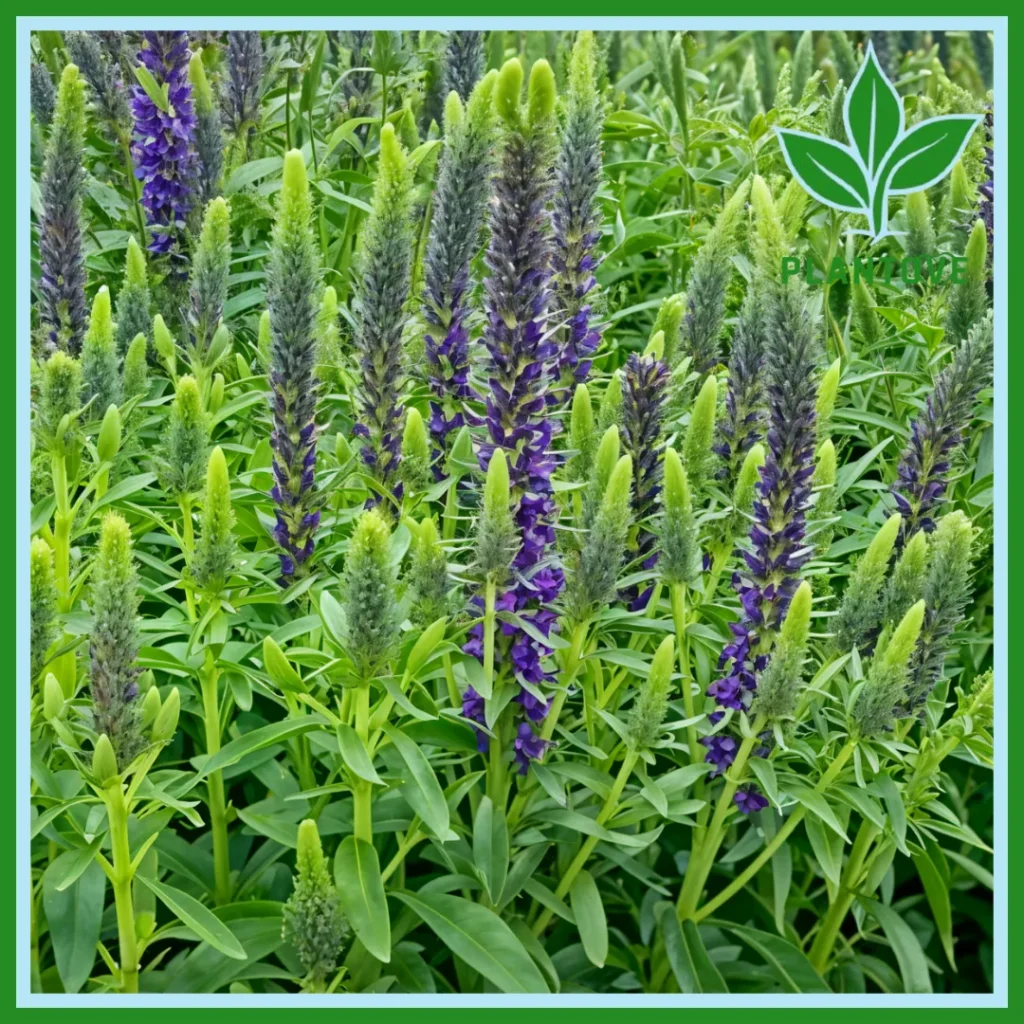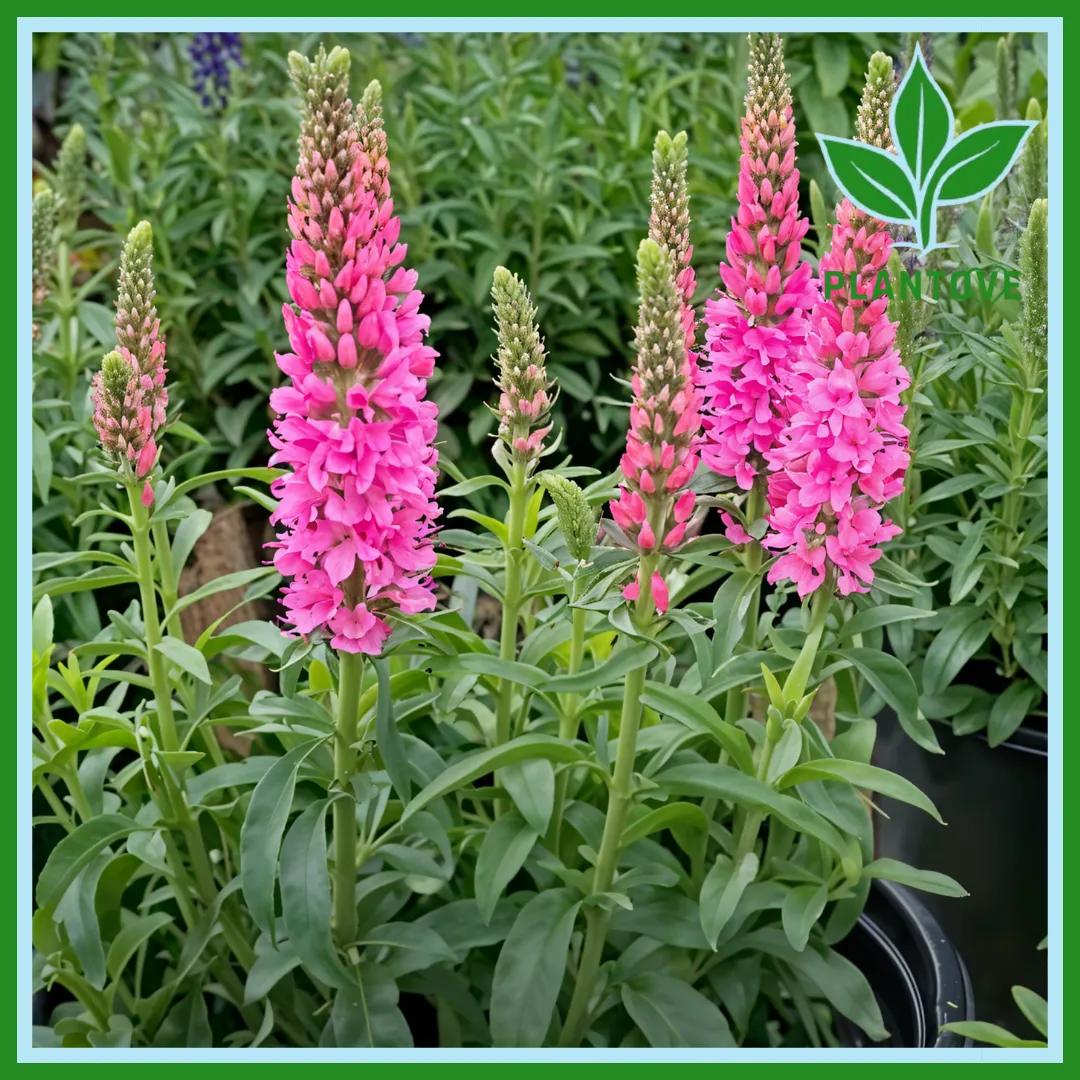The Speedwell plant, with its delicate flowers and easy-going nature, is a charming addition to gardens and landscapes. Known for its vibrant hues of blue, purple, and pink, Speedwell (genus Veronica) has become a favorite in many gardens for its beauty and resilience. Whether you’re a seasoned gardener or a beginner, learning about Speedwell plant care, common Speedwell plant problems, and the question of whether Speedwell is invasive can help you grow and maintain this lovely plant in your garden.
What is a Speedwell Plant?
The Speedwell plant belongs to the genus Veronica, which includes over 500 species. These plants are often found growing in temperate regions of Europe, Asia, and North America. They thrive in a variety of conditions, making them ideal for a range of garden styles. Speedwells are known for their small, attractive flowers that grow in spikes or clusters. The flowers bloom in shades of blue, pink, white, and purple, and they often attract pollinators such as bees and butterflies.
There are many varieties of Speedwell plants, ranging from low-growing ground covers to taller shrubs. Some varieties are annuals, while others are perennial. Speedwells are commonly used in flower beds, borders, and even in containers, making them a versatile choice for garden design.
Speedwell Plant Care: How to Grow and Maintain Speedwell

Taking care of Speedwell plants is relatively easy, as they are low-maintenance and adaptable. However, like any plant, they do have specific requirements that need to be met for optimal growth.
1. Planting Speedwell
Speedwells prefer well-drained soil with a slightly acidic to neutral pH. When planting, ensure that the soil is loose and not overly compacted. For the best results, plant Speedwell in a spot that receives full sun, although they can tolerate partial shade. Ideally, they should receive at least six hours of sunlight a day. In areas with hot climates, some afternoon shade may be beneficial to prevent the plants from wilting.
If you are planting a Speedwell as a ground cover, space the plants about 6 to 12 inches apart, as they will spread over time. For taller varieties, provide more space to allow them to grow and mature.
2. Watering
Speedwells do not require a lot of water, as they are relatively drought-tolerant once established. However, they still need regular watering during dry spells. Water your Speedwell plant deeply to ensure the roots are well-moisturized, but avoid over-watering, as this can lead to root rot. Be mindful of the soil’s moisture level—let the soil dry out between waterings.
3. Fertilizing
Speedwell plants are not heavy feeders but can benefit from occasional fertilization. A balanced fertilizer applied in early spring or after the first bloom cycle will help promote healthy growth and vibrant flowers. Avoid over-fertilizing, as this can lead to excessive foliage growth and fewer flowers.
4. Pruning and Deadheading
To keep your Speedwell looking its best, it’s a good idea to deadhead spent flowers regularly. Removing dead or faded blooms encourages the plant to produce more flowers, prolonging the blooming period. After the blooming season ends, prune back the plant to maintain its shape and prevent leggy growth. For perennial varieties, cut the plant back to the ground in late fall or early spring before new growth begins.
5. Mulching
Adding mulch around your Speedwell plants can help retain moisture, suppress weeds, and regulate soil temperature. Use organic mulch like shredded bark, compost, or leaves. However, avoid placing mulch directly against the stem of the plant, as this can promote rot.
Speedwell Plant Problems: Common Issues to Watch Out For

While Speedwell plants are generally hardy and easy to grow, they are not immune to some common plant problems. Knowing what to look for can help you keep your Speedwell healthy and vibrant.
1. Pests and Diseases
Speedwell plants are susceptible to certain pests and diseases. Here are some of the most common issues:
- Aphids: These tiny insects can cause significant damage to Speedwell plants by sucking sap from the leaves. Aphids can be controlled using insecticidal soap or by spraying the plant with a strong jet of water to dislodge them.
- Powdery Mildew: A fungal disease that appears as a white, powdery coating on leaves and stems, powdery mildew thrives in humid conditions. To prevent this, avoid overhead watering and ensure good air circulation around your plants. If powdery mildew appears, prune affected areas and treat the plant with a fungicide.
- Rust: Speedwell plants are also prone to rust, a fungal infection that causes orange or brown spots on the leaves. Remove infected leaves immediately to prevent the spread of rust and treat the plant with an appropriate fungicide.
2. Root Rot
Speedwell plants do not like to have “wet feet,” which means that waterlogged soil can cause root rot. Ensure that the soil drains well and avoid over-watering. If you notice yellowing leaves or wilting plants, this may indicate root rot. If the problem is caught early, trimming the affected roots and replanting the Speedwell in well-draining soil may help.
3. Leggy Growth
Speedwell plants that don’t receive enough sunlight may become leggy, with long, spindly stems and fewer flowers. Ensure your plant is receiving enough sun, and consider pruning back the plant to encourage bushier growth.
Is Speedwell Invasive?
One of the concerns with any garden plant is whether it will become invasive and take over the landscape. So, is Speedwell invasive?
The answer depends on the specific species and the region where it’s planted. In general, most Speedwell species are not considered invasive. However, some varieties of Speedwell, especially groundcover types like Veronica repens and Veronica prostrata, can spread quickly in certain environments and may become aggressive in the right conditions.
These plants often spread through their roots or by reseeding, so if you’re planting Speedwell in an area where it has the potential to outcompete other plants, it’s essential to monitor its growth. In regions with warm climates, some Speedwell varieties may grow more aggressively and spread beyond their intended space.
If you’re concerned about Speedwell becoming invasive, consider planting varieties that are less prone to spreading, or regularly check for signs of uncontrolled growth. In regions where Speedwell is known to spread aggressively, it may be advisable to plant it in containers or confined spaces to prevent it from overtaking your garden.
Conclusion: Speedwell Plant Care and Considerations
Speedwell plants are a beautiful and versatile addition to any garden. Whether you’re planting them as a ground cover or growing taller varieties for their vibrant flowers, these plants can brighten up your garden with minimal effort. By following proper Speedwell plant care, addressing common Speedwell plant problems, and being aware of the potential for invasiveness, you can ensure your Speedwell plants thrive year after year.
From choosing the right variety to proper planting techniques and pest control, Speedwells are manageable and rewarding plants to grow. Just be mindful of the space they need, and keep an eye on their growth to prevent any potential invasiveness. With the right care and attention, Speedwells will continue to offer their beauty and charm throughout the growing season.

